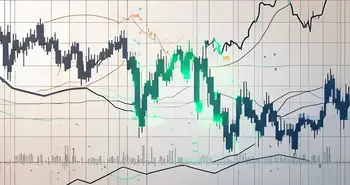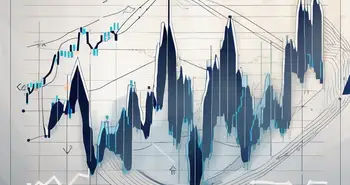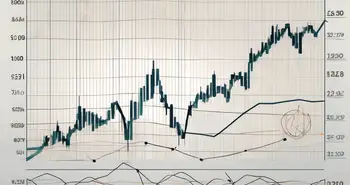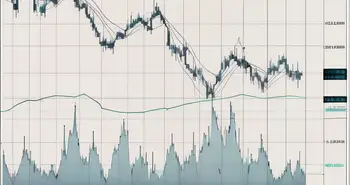Understanding Support and Resistance in Forex Trading

Forex trading can be an exhilarating venture. The fast-paced nature of the market means that it's always evolving, offering new opportunities for those who know how to analyze and respond to the movements. One essential concept that every successful trader must understand is support and resistance. In this article, I will guide you through the basics of forex trading, introduce you to support and resistance, explain their importance in trading decisions, teach you how to identify these levels on price charts, and share some powerful trading strategies. Let's dive in!
The Basics of Forex Trading
Before we delve into the intricacies of support and resistance, let's take a moment to understand what forex trading is. In simple terms, forex trading involves buying one currency while simultaneously selling another. Traders aim to profit from the fluctuations in currency exchange rates. This market is open 24 hours a day, five days a week, allowing traders from all over the world to participate at any time that suits them. To succeed in forex trading, one needs a deep understanding of the market forces and how to interpret various technical indicators.
Forex trading is the largest financial market globally, with a daily trading volume exceeding $6 trillion. The main participants in this market are central banks, financial institutions, corporations, and individual traders. The forex market operates on a decentralized network of banks and financial institutions, making it highly liquid and accessible. Traders can take advantage of leverage to amplify their trading positions, but this also increases the risk involved.
Now that we have a basic understanding of forex trading, let's move on to examine the concept of support and resistance.
Introduction to Support and Resistance
To be successful in forex trading, it is essential to identify key support and resistance levels accurately. These levels act as invisible barriers that influence the behavior of the market. Understanding the dynamics between support and resistance is crucial for predicting price movements accurately and setting effective stop-loss and take-profit points.
Support and resistance levels are fundamental concepts in technical analysis that play a significant role in shaping trading decisions. Traders use these levels to gauge the strength of buying and selling pressures in the market. By recognizing these critical levels, traders can make informed decisions about when to enter or exit trades, thereby improving their overall trading performance.
Defining Support in Forex Trading
Support refers to a price level at which demand is strong enough to prevent the price from falling further. It acts as a floor, providing a cushion for the price against downward pressure. The more times a price bounces off the support level, the stronger it becomes. Identifying support levels accurately allows traders to enter long positions at optimal prices, anticipating a bounce and a potential upward trend.
Traders often use various technical indicators and chart patterns to confirm the strength of a support level. Common indicators include moving averages, trendlines, and Fibonacci retracement levels. By combining these tools with the analysis of support levels, traders can increase the probability of making successful trades and managing risk effectively.
Defining Resistance in Forex Trading
Resistance, on the other hand, is a price level at which supply exceeds demand, preventing the price from rising further. It acts as a ceiling, halting upward movements. Like support levels, resistance levels become stronger each time the price is repelled from reaching higher levels. Recognizing resistance levels enables traders to enter short positions, expecting the price to reverse and potentially initiate a downward trend.
Traders often look for confirmation of a resistance level through multiple technical indicators and chart patterns. By analyzing the convergence of different signals at a specific price level, traders can gain more confidence in their trading decisions. Understanding the interplay between support and resistance levels is essential for developing a comprehensive trading strategy that accounts for potential price reversals and breakouts.
The Importance of Support and Resistance in Trading Decisions
Support and resistance levels play a vital role in making informed trading decisions. By identifying these levels accurately, traders can anticipate potential price movements and adjust their strategies accordingly.
Predicting Price Movements
Support and resistance levels offer valuable insights into future price movements. When the price approaches a support level, it is likely to rebound, making it an opportune moment to enter a long position. Conversely, when the price nears a resistance level, it is likely to reverse, presenting an ideal time to enter a short position. By combining support and resistance analysis with other technical indicators, traders can further enhance their predictions and increase their chances of success.
Setting Stop-Loss and Take-Profit Points
Support and resistance levels also help in setting effective stop-loss and take-profit points. Placing a stop-loss order just below a support level or just above a resistance level can minimize risk and protect capital in case the price breaks through. Similarly, taking profits near a resistance level or below a support level allows traders to lock in gains before the market undergoes a potential reversal.
Personally, I have found support and resistance levels to be invaluable in my trading journey. They have consistently guided me in making informed decisions, minimizing losses, and maximizing profits. I vividly recall a trade I took based on a strong support level. The price had reached a point where it had bounced off multiple times before. I entered a long position, and true to the pattern, the price reversed and went on to make significant gains. This experience solidified my belief in the power of support and resistance.
Identifying Support and Resistance Levels
Now that we understand the importance of support and resistance, let's explore how to identify these levels accurately.
Using Technical Analysis
Technical analysis provides various tools and indicators that traders can use to identify support and resistance levels. Popular methods include trendlines, moving averages, pivot points, and Fibonacci retracements. By combining these tools with price action analysis, traders can pinpoint key levels and make well-informed trading decisions.
Understanding Price Charts
Price charts are indispensable tools for identifying support and resistance levels. Candlestick charts, for example, enable traders to visualize price movements and identify significant price levels easily. By paying attention to price patterns and chart formations, traders can spot areas of support and resistance and adjust their strategies accordingly.
Trading Strategies Using Support and Resistance
Support and resistance levels form the foundation of several powerful trading strategies. Let's explore two popular approaches:
Breakout Trading Strategy
The breakout trading strategy involves identifying support and resistance levels and waiting for a breakout, which occurs when the price moves beyond these levels. Traders can enter positions in the direction of the breakout, anticipating a strong continuation in price momentum. This strategy requires patience and careful analysis of price patterns to confirm breakouts and avoid false signals.
Bounce Trading Strategy
The bounce trading strategy focuses on entering positions when the price bounces off support or resistance levels. Traders anticipate a reversal in price direction and aim to capture profits from the subsequent movement. This strategy requires precision in identifying reliable support and resistance levels and careful timing of entry and exit points.
Support and resistance are crucial concepts in forex trading. Mastering these levels will unlock countless opportunities and increase your chances of success. Remember to constantly analyze price movements, adapt your strategies to changing market conditions, and never stop learning. Happy trading!
Ready to put your knowledge of support and resistance to the test in the forex market? Join Morpher, the revolutionary trading platform that leverages blockchain technology for a seamless, fee-free trading experience. With Morpher, you can trade forex alongside stocks, cryptocurrencies, and even unique markets like NFTs with zero fees and infinite liquidity. Start with as little as $1, take advantage of up to 10x leverage, and enjoy the safety of a non-custodial wallet. Sign Up and Get Your Free Sign Up Bonus today to transform the way you trade with Morpher's innovative platform.

Disclaimer: All investments involve risk, and the past performance of a security, industry, sector, market, financial product, trading strategy, or individual’s trading does not guarantee future results or returns. Investors are fully responsible for any investment decisions they make. Such decisions should be based solely on an evaluation of their financial circumstances, investment objectives, risk tolerance, and liquidity needs. This post does not constitute investment advice.

Painless trading for everyone
Hundreds of markets all in one place - Apple, Bitcoin, Gold, Watches, NFTs, Sneakers and so much more.

Painless trading for everyone
Hundreds of markets all in one place - Apple, Bitcoin, Gold, Watches, NFTs, Sneakers and so much more.









